The SlyFox Beginner’s Guide to Local SEO
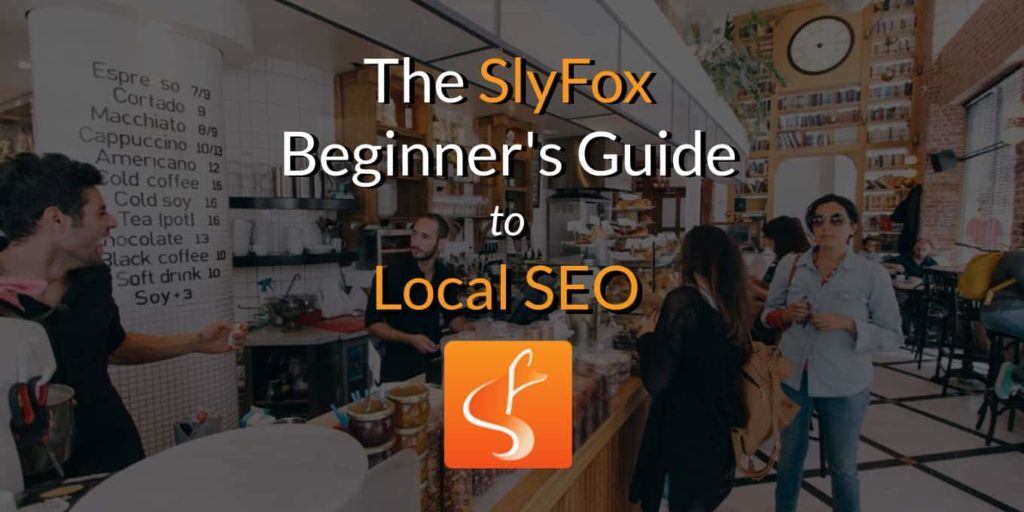
In the fast-paced world of SEO, there are plenty of new tricks and tools to discover. Local SEO is a fairly recent advancement and is currently, along with secure and mobile search, a primary focus for the Google Search team. How local search works, looks and is curated has changed many times since 2011. Then again, there’s speculation that Google makes a handful of minor updates to the Search mechanism every day.
Don’t get discouraged and definitely don’t get lost! Most of what we’re going to discuss next can be done by anyone with internet access, a phone or PC and the willingness to boost their business.
The reason that Local SEO has become Google’s top priority is held right now in your hot little hand. Widespread adoption of mobile devices has led to a cultural shift in how we consume and exchange information. Vast distances, unknown places as well as your local neighbourhood are all compressed at the same time in a millisecond into a format that a child can read and understand.
Theoretically, somebody who has never been to New York City can surf the subway and explore the big apple like a born and raised New Yorker using Google Search. Alternatively, a lifelong New Yorker can come to London, Ontario for the first time, walk straight downtown and find all the best restaurants, nightlife and hotels… — wait, that’s only if London businesses have done some local SEO.
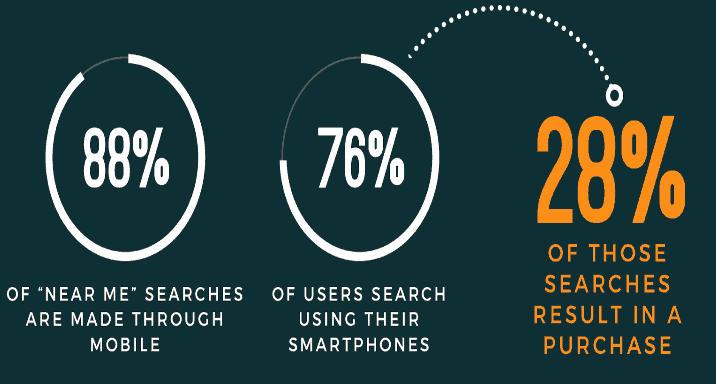
What we’re trying to get at here is Google had to handle things differently because of contextually relevant queries and geo-location data coming from your cell phone as you browse on the go. That means you also have to handle things differently if you want to benefit from Google Search and the huge volumes of mobile search traffic occurring every second. The best way to understand query context and geo-location is to see it in a search intent progression from general research to local query. You can do this yourself, just clear your cache and follow along.
What is a wiener dog?
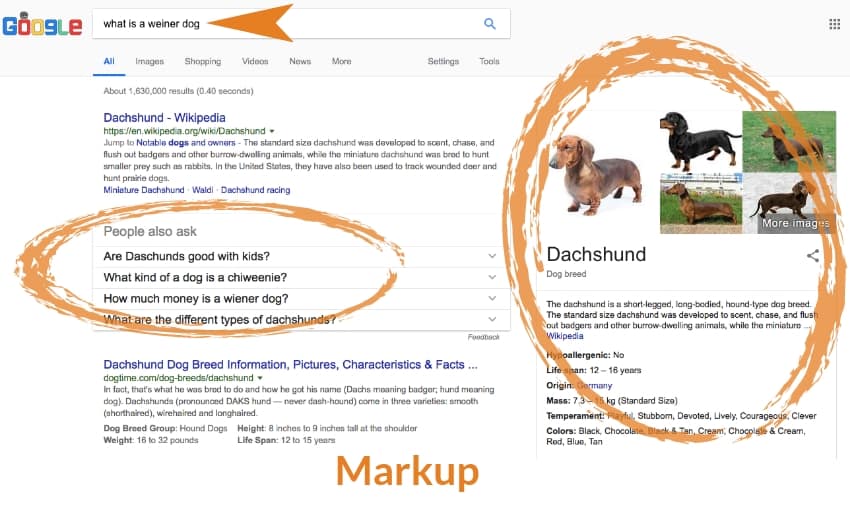
Why do weiner dogs sleep so much?
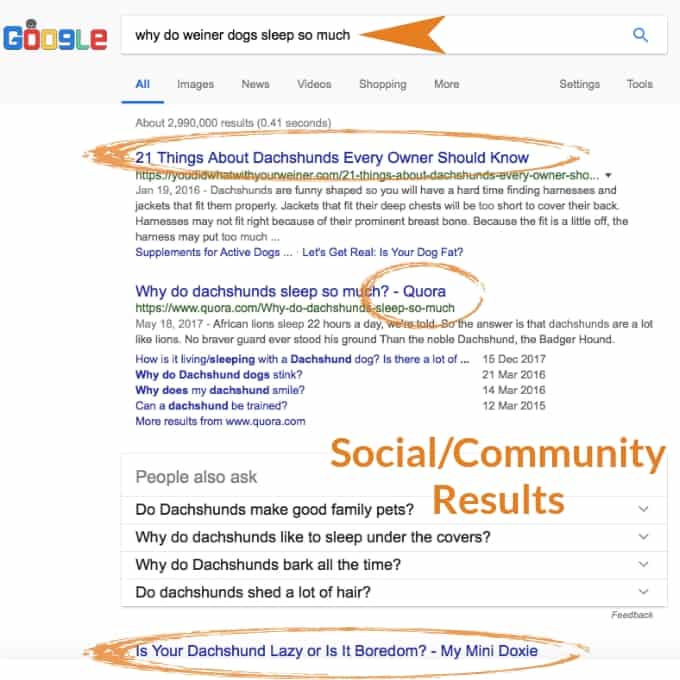
How much are weiner dogs?
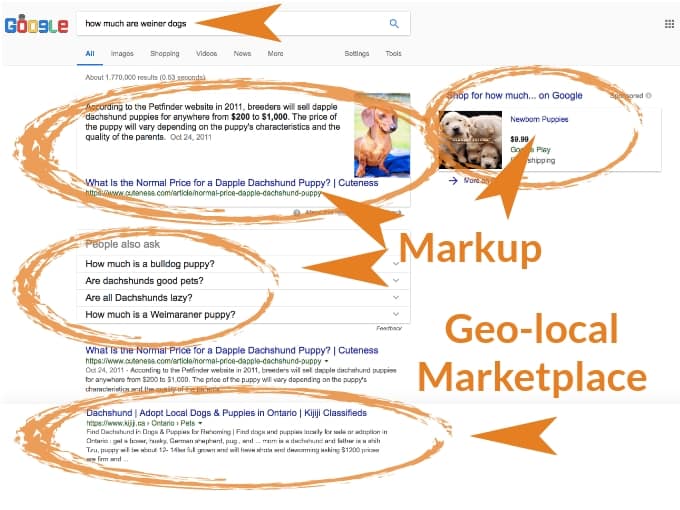
Weiner dogs near me
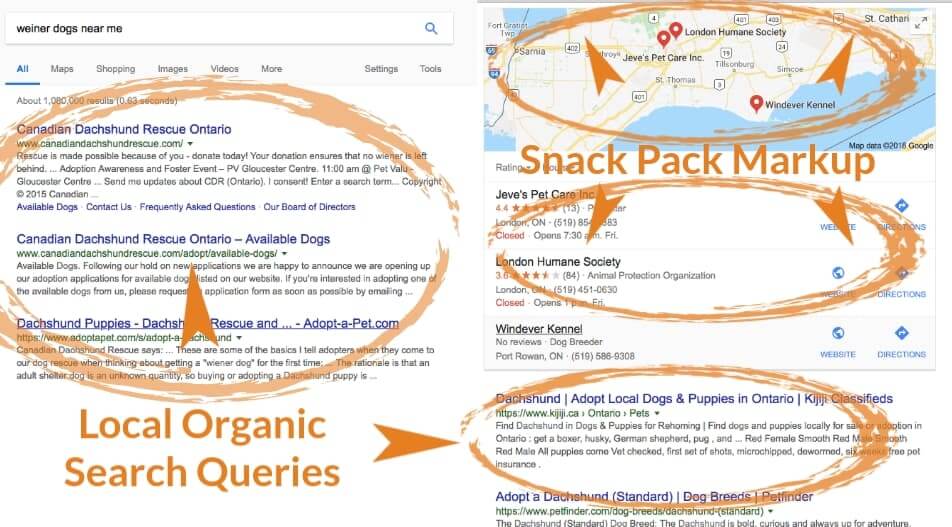
There are two major things that happen during that sort of query progression. Firstly, you notice what is sometimes called ‘curated markups’ on the sides that are injected by Google. Typically, on very general queries Google doesn’t even rely on you to decide what you want to click and instead condenses the result into a digestible visual snippet or marks it up into its own graphic.
The second thing you probably noticed is when we further refined our query the result was divided into two major sections. The top section is known to SEO’s as the Local Pack or Snack Pack (because this section eats most of the traffic) and it is another example of a curated markup injected by Google. The second part lists the Local Organic Search Results which are generated by the Google Search algorithm and is not an injected Google markup.
Now you might have an urge to shout, “I’m only doing Local SEO from now on!”. Or, “I want to get into the Snack Pack by the end of the day!”. While these are normal reactions, like any aspect of SEO Google makes it intentionally difficult to influence results in the short term to prevent spam and to create a culture of ‘best practices’ so small businesses and large corporations can still access the same traffic.
By the way, you should avoid concentrating on only one aspect of SEO because the way it’s developed over the years is to ensure every element greatly benefits your web presence, contributes to and amplifies each element. But to get our clients on the road to Local SEO greatness we focus on four areas: Google My Business, NAP Citations and Page Signals.
The Road to Local SEO Greatness
Google My Business
Google My Business is a free and super easy to use tool that essentially helps manage your online appearance across all Google products including Maps, Seach, Shopping and more. Basically, Google is giving you the opportunity to put your best foot forward and provide them with the shiniest most comprehensive and complete profile pitch about your business. By regularly updating photo and logo content, hours of operation, news and reviews you can tell a story about your business both to Google and most importantly, to your customers. Ask yourself right now: is your Google My Business page incomplete or in shambles?
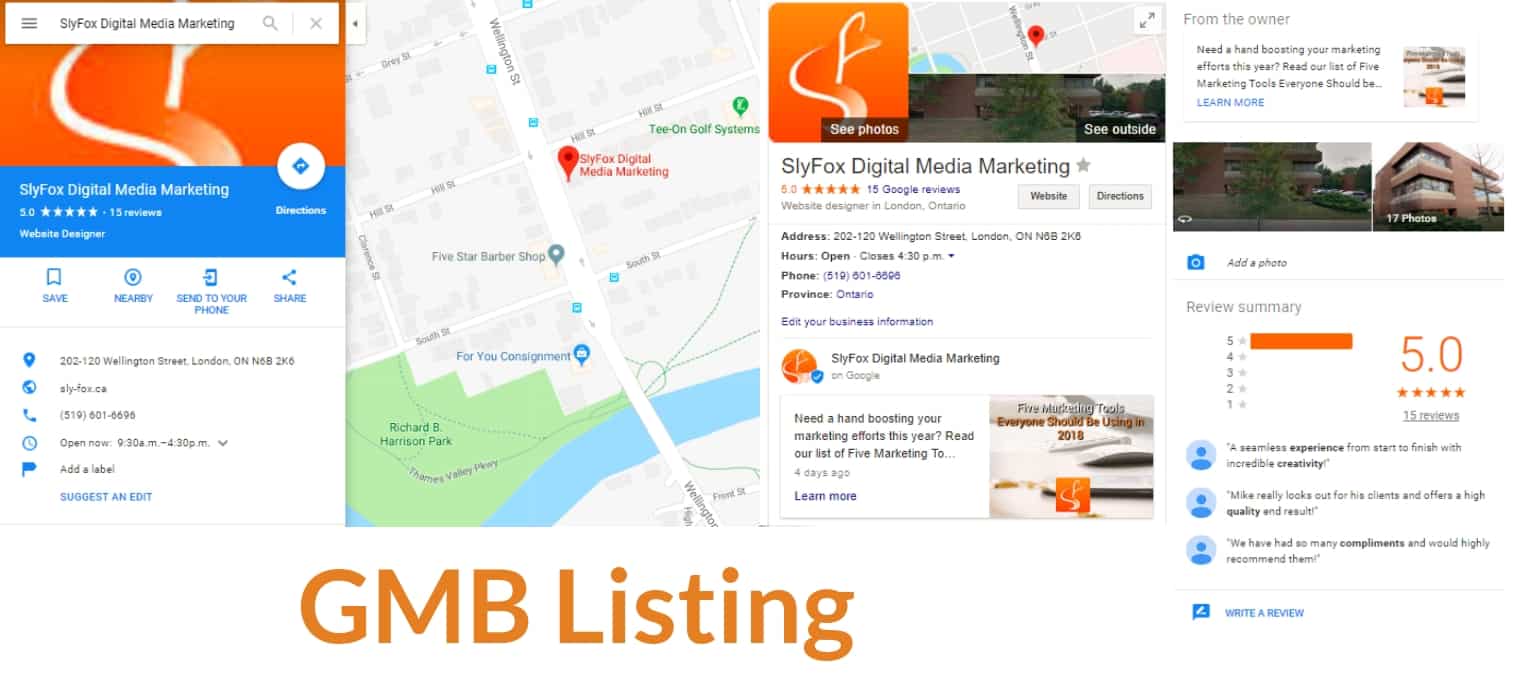
NAP Citations
NAP Citations are another contributing factor for your Local SEO ranking. NAP stands for Name, Address, and Phone Number and it’s a critical factor for influencing which companies Google and other search engines prioritize for local intent searches. NAP citations are gained by inserting your contact details in well, everywhere! But the places to prioritize these citations are in trusted local business directories such as The Better Business Bureau, Yelp and Yellow Pages. But there are hundreds of more local and industry niche specific directories.
Page Signals
Page Signals are all the technical on and off-site things you are doing to ensure that people can find you while browsing around and following links on the web. Some of the easiest things you can do to improve your page signals are: refreshing the information on your contact page, checking you have an embedded Google Map on your website, seeing if you have your primary keyword and business location in your title tag and checking if you have your homepage link on your Google My Business and social profiles. Some of the harder things to do for page signals are: adding local LSI keywords, embedding geo-local mentions in alt text sitewide, and adding JSON-LD local schema markup and generating and displaying customer reviews. If some of that’s out of your league drop us a line and we can explain!
SlyFox Local SEO Starter Tips
Start scrapbooking! Seriously. One of the major easy and actionable Local SEO tips we can suggest is to create a “Business Bible Scrapbook” which holds all the important up-to-date information like addresses, phone numbers, work hours, employee bios and pictures, product and services pictures/info, up-to-date web and social URLs. When you think you’re done keep going.
Add customer testimonials, customer relations moments, proud business milestones, important and everyday photos and videos, renovation photos, shining reviews, awards and recognition. This practice is an invaluable reference material for training new employees, keeping track of the day-to-day info and creating a historical record of your business. Also, it makes it easier to fill out Local SEO directories, update GMB profiles and for every online or offline administrative requirement that creeps up.
Get reviews! This final tip seems straightforward but is actually one of the hardest to execute Local SEO tactics. Now you might be thinking, “Oh, that’s easy! Everyone loves me and would drop everything to review my business online”. While it may be true that you’re well-liked and have worked hard to secure your reputation and relationship with customers it’s absolutely not true that they will take time out of their schedule to write detailed reviews on Facebook or Google. And unfortunately, it’s speculated that the average business needs 5 Google reviews (more for competitive industries) to make advances in Organic Search or be considered for the Snack Pack.
Start today by asking your regulars or repeat customers to review you online and stay on top of them without making them feel pressured or uncomfortable. Let them know what they mean to you and also what it means for your online reputation. If you still can’t get a review reach out to us. SlyFox has developed some great methods for provoking awesome customer reviews!
Now after everything we’ve covered can you still do Local SEO if all of the above was too confusing and over-packed with information? Sure! There are many factors that influence your rank but the TLDR of it all is to start being proactive on the web. Participate in your community. Give back and engage your community. The tactics used in a virtual environment shouldn’t be the death of local community. As with many aspects of online marketing, you don’t need to reinvent yourself to fit your business into a digital realm. Just “Re-embed yourself” in the local digital landscape and send the right signals, show you are present and available in a digital sense just as you are every day at the storefront.